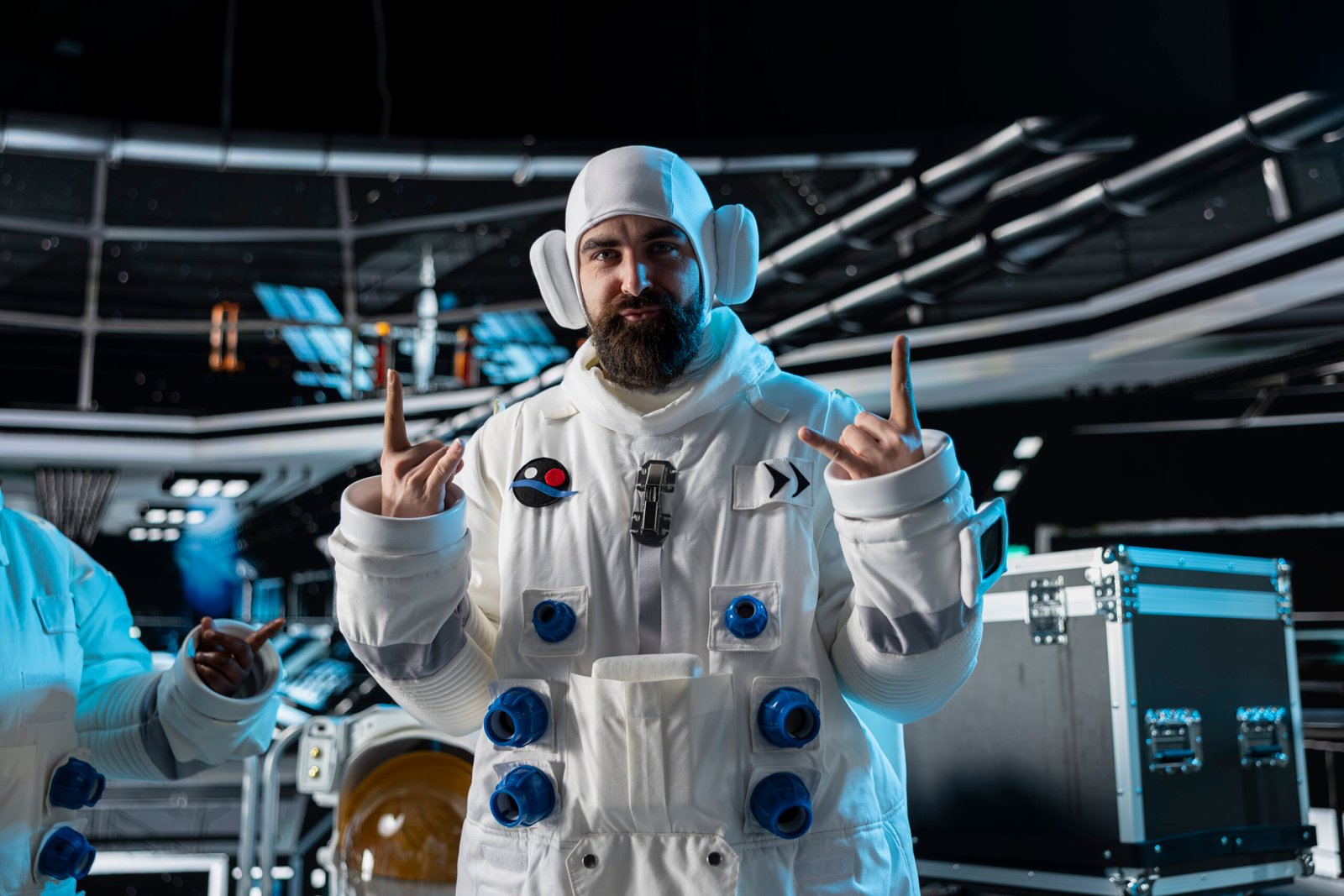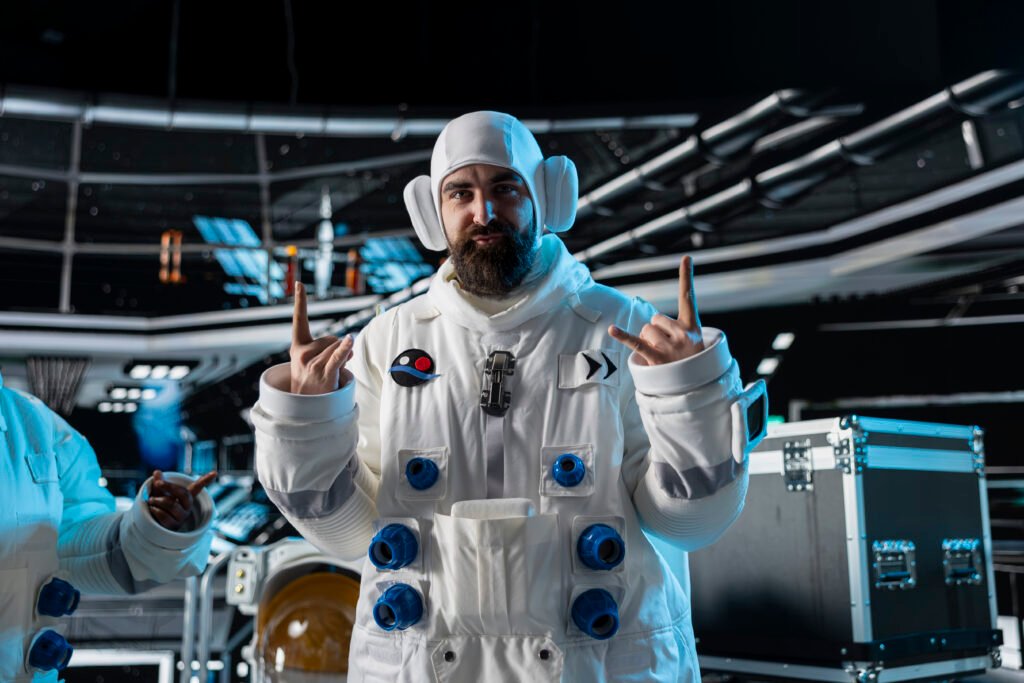How Safe Is Space Tourism? — 8 Hidden Risks You Need to Know

Space tourism is no longer science fiction — it’s a growing industry selling minutes of weightlessness, once-in-a-lifetime views of Earth, and the bragging rights of “I went to space.” But if you’re thinking of buying a ticket, a reality check is vital: space tourism carries a set of familiar and surprising risks — some immediate and dramatic, some subtle and long-term. This article walks you through 8 hidden risks every prospective space tourist should understand, plus practical advice, real-world examples, an at-a-glance table, and an FAQ to help you decide whether that rocket ride is worth it.

Table of Contents
1) Acute mechanical failure and vehicle risk — still real, even now
Space is unforgiving: propulsion systems, separation devices, parachutes, heat shields and avionics all must perform perfectly during a short, high-energy flight. The industry has made huge progress, but there have been catastrophic failures during testing and flights in recent years. The most public example is the 2014 SpaceShipTwo (VSS Enterprise) breakup during a test flight, which killed one pilot and injured another — a reminder that even well-designed vehicles can fail under complex conditions. NTSB+1
Why this matters: suborbital flights compress extreme loads, ignition events and high dynamic pressure into minutes — small design or human errors can have outsized consequences.
2) Regulatory “informed consent” — you won’t get a government “safe” stamp
Commercial spaceflight operators in many jurisdictions are not required to prove their vehicles are certified “safe for human transport” in the same way airlines are. In the US, for example, commercial operators must provide written notice that the government has not certified the launch/reentry vehicle as safe for carrying humans, and they must obtain participants’ informed consent. That shifts responsibility and legal risk to the company and the passenger. FAA+1
Why this matters: you may be explicitly signing away certain rights or acknowledging risks that would be unacceptable on routine transportation.
3) Short-term physiological hazards: g-forces, motion sickness, and cardiac stress
Launch and reentry expose passengers to high g-forces and rapid changes in acceleration. Even short suborbital flights can provoke intense g-loads during ascent and reentry; that, plus vestibular disturbances, often causes severe nausea, disorientation or, in rare cases, cardiovascular events. Companies screen and train passengers, but unexpected pre-existing conditions (undiagnosed heart disease, arrhythmias) can turn a thrill into a medical emergency.
Why this matters: acute medical issues can be life-threatening in a flight environment where immediate advanced medical care is limited.
4) Radiation exposure — short vs long trips, and what we don’t know
Space travellers face elevated cosmic radiation levels compared with Earth-surface life. For short suborbital hops the increase is modest, but for orbital or deep-space tourism (private stations, lunar flybys) radiation becomes a serious health concern: DNA damage, elevated cancer risk and potential acute radiation effects for high exposures. Research into space radiation’s long-term effects continues, and although professionals use shielding and mission planning to reduce exposure, the full picture for occasional civilian visitors is incomplete. PMC+1
Why this matters: cumulative exposure matters; if you plan repeat flights or longer stays, radiation risk grows.
5) Microgravity and short-term physiological changes — not just for astronauts
Even brief exposure to microgravity causes bodily shifts: fluid redistribution toward the head, changes to vestibular function, and temporary reductions in orthostatic tolerance (standing up on Earth feels different after weightlessness). For long stays (space hotels, orbital habitats), microgravity causes muscle atrophy, bone loss, vision problems (SANS), and immune changes — effects partially reversible but potentially serious. New research keeps highlighting previously under-appreciated consequences (e.g., vascular and neurological changes). Live Science+1
Why this matters: even short trips can trigger symptoms that interfere with the return-to-Earth recovery period; longer stays need serious countermeasures (exercise, medical monitoring).
6) Psychological stress, confinement and group dynamics
Space tourism isn’t just a physical challenge. Anxiety before launch, the sensory shock of microgravity, isolation during transit, and close quarters on small capsules or stations can produce acute stress, panic, or interpersonal conflicts. Many operators screen for severe psychiatric illness and train passengers in basic team behavior, but the tourist experience is emotionally intense and can trigger unexpected mental health reactions.
Why this matters: psychological episodes can endanger the mission and require emergency protocols — not a situation you want when you’re 50+ miles up.
7) Liability, insurance and financial risks — not only physical risks matter
Buying a spaceflight ticket can be expensive; today’s policies and industry practice mean passengers may receive limited protections. Insurance premiums for crew/passenger life & injury can be large or hard to find. Moreover, legal frameworks around liability and compensation after an accident are still evolving. You might find contract clauses that restrict lawsuits or cap damages. Congress.gov
Why this matters: even if you survive a flight and return home, medical, legal and financial fallout might be complicated.
8) Environmental and systemic risks — the “hidden” societal effects
Space tourism’s environmental footprint (rocket emissions, contrails, localized sonic impacts at launch sites) and space-traffic concerns (more launches increasing debris risk) are often overlooked by individual customers. Repeated commercial launches could amplify atmospheric effects and complicate long-term space sustainability. Regulators and companies are starting to study these externalities, but they remain imperfectly regulated. Space
Why this matters: there’s a reputational and ethical dimension — your ticket purchase contributes to an industry with environmental and orbital consequences.
At-a-glance table — 8 Hidden Risks (summary)
| # | Hidden Risk | Likelihood (today) | Main Impact | What to ask before you book |
|---|---|---|---|---|
| 1 | Mechanical/vehicle failure | Low–Medium (testing/events still occur) | Catastrophic injury/death | What safety record & NTSB/independent reviews exist? |
| 2 | Regulatory gaps / informed consent | High (policy standard) | Legal/financial exposure | Do you get written govt disclaimers & what rights are waived? |
| 3 | Acute physiological (g-forces) | Medium | Nausea, fainting, cardiac events | Medical clearance details; g-profile of flight |
| 4 | Radiation exposure | Low (suborbital) → High (orbital/long) | DNA damage / cancer risk | Radiation dose estimates for the mission |
| 5 | Microgravity effects | Low (brief) → High (long) | Muscle/bone/vision changes | Planned countermeasures & post-flight rehab |
| 6 | Psychological stress | Medium | Panic, conflict, PTSD-like stress | Preflight psychological screening & support |
| 7 | Liability/insurance | High | Financial/medical recovery | What insurance/indemnity & refund policies exist? |
| 8 | Environmental & orbital impact | Medium (growing) | Pollution, debris | Company sustainability policy & debris mitigation |
Real-world incidents and what regulators require
- VSS Enterprise (2014): a test flight breakup reminds us that even companies with experienced engineers and pilots have suffered fatal accidents; investigations highlighted design, oversight, and training failures. NTSB+1
- Blue Origin New Shepard anomaly (2022): an in-flight booster/engine nozzle failure grounded the vehicle for investigations and redesigns before a safe return-to-flight campaign; regulators, companies and investigators analyzed causes and mitigations. Space+1
- Regulatory posture: many governments (e.g., the FAA in the US) require operators to secure informed consent from space flight participants and to report accidents. But certification regimes are different from airline safety certifications — expect disclosures and contractual risk-shifting. FAA+1
Takeaway: incidents have happened, investigations changed designs, and regulators’ current main tools are reporting, investigations, and informed-consent regimes rather than full “passenger vehicle” certification — for now.
Practical preflight checklist — what to do before you buy a ticket
- Medical screening — get a comprehensive physical (cardiac, neurology, ENT) and ask for written acceptance criteria the company uses.
- Ask for the g-profile and flight timeline — know peak g, duration, and emergency descent/noise levels.
- Radiation exposure estimate — for orbital or long-stay offers, request a dose estimate in mSv and any shielding plans.
- Read the contract thoroughly — look for indemnity clauses, medical responsibility, and refund/flight-cancel policies. Consider legal review.
- Insurance — inquire about life, medical evacuation, disability coverage for spaceflight and check whether your existing travel insurer covers it.
- Training & simulations — attend all offered training and insist on a simulation or VR walk-through of emergency scenarios.
- Mental-health prep — practice stress-reduction techniques, and disclose psychiatric history if relevant.
- Post-flight plan — understand post-flight medical checks and rehab support (physio, vestibular therapy).
What operators do (and should) to reduce risk
- Rigorous vehicle testing with independent review bodies; transparent reporting of anomalies and corrective actions. Payload+1
- Clear informed consent processes and participant education. FAA
- Medical screening and training: baseline tests, centrifuge runs or simulators, and emergency drills.
- Shielding & mission design where radiation could be high (orbital stays). PMC
- Debris mitigation and environmental monitoring to reduce systemic impacts.
Tips & tricks for prospective space tourists
- Don’t hide medical history. Full disclosure protects you and the mission.
- Ask for data, not promises. Request vehicle failure rates, last anomaly reports and corrective actions in writing.
- Book refundable travel for backups. Launch schedules slip; plan flexible arrangements.
- Join astronaut-prep communities. Forums and preflight groups can share real-world tips.
- Consider a suborbital flight first. It gives a realistic experience with lower cumulative radiation and shorter mission durations.
- Plan your post-flight recovery. Even short flights can leave you dizzy or dehydrated — schedule rest and medical follow-up.
Related resources & further reading
- FAA — Human Space Flight safety and informed consent guidance. FAA
- NTSB report on the 2014 VSS Enterprise accident (official investigation pages). NTSB
- Review papers on health effects of spaceflight (radiation, microgravity). PMC+1
- Recent reporting on New Shepard investigations and return-to-flight activities. Space+1
FAQs — What readers most want to know
Q1: Is suborbital space tourism (e.g., a few minutes of weightlessness) safe?
A: “Safe” is relative. Suborbital flights expose passengers to extreme but short-duration g-forces and a brief period of weightlessness. Operators mitigate risk through testing and training, but mechanical failures remain possible and informed consent is standard practice. Check the operator’s safety record and ask for flight-specific medical guidance. Payload+1
Q2: Will a single short flight significantly increase my cancer risk from radiation?
A: For most suborbital flights the dose is small and the incremental cancer risk from one brief hop is low. However, orbital or long-duration flights impart higher doses; repeated flights increase cumulative exposure. If you’re concerned, request dose estimates and talk to a specialist in radiation medicine. PMC
Q3: Can I sue if something goes wrong?
A: Contracts often contain indemnity and waiver language. Legal recourse depends on your jurisdiction, the contract language, and the facts of the incident. Regulators currently emphasize informed consent rather than full safety certification, so review contractual terms and consult a lawyer. Congress.gov
Q4: What medical conditions disqualify you?
A: The list varies by operator but commonly includes uncontrolled cardiovascular disease, recent strokes, uncontrolled seizures, severe claustrophobia, and certain ENT problems. Many companies provide a medical checklist you should review early. Always disclose history honestly.
Q5: How do operators train you for emergencies?
A: Typical training includes briefings, VR or simulator sessions, donning of suits, practice of emergency procedures (brace positions, use of oxygen/controls), and sometimes centrifuge runs for g-tolerance. Make sure the operator’s program gives adequate hands-on practice.
Q6: If the vehicle fails, can you be rescued?
A: Rescue options depend on mission profile and altitude. Suborbital capsules usually have abort systems or parachutes; orbital missions have more limited immediate rescue options. Rescue planning is a core part of mission design — ask the operator for their contingency plans. Space
Q7: Is it ethical to buy a ticket given environmental concerns?
A: This is a personal choice. Consider company sustainability plans, frequency of launches, and whether the operator offsets emissions or designs for lower-impact operations. Industry practices are evolving; informed buying decisions are a way to influence standards. Space
Final verdict — should you go? (short decision guide)
- If you’re risk-averse: Wait. The industry is maturing, but incidents and unknowns remain.
- If you’re medically vulnerable: Consult specialists first and prefer short, suborbital experiences with thorough screening.
- If you’re comfortable with calculated risk: Do your homework, insist on transparency, secure insurance, attend full training, and be prepared for delays and contingencies.
Space tourism promises unmatched experiences — but those experiences come with real, sometimes-hidden risks. Be curious, ask hard questions, and treat your ticket like a significant medical and legal decision, not just a luxury purchase.
Conclusion
Space tourism will change how many people see Earth and may drive scientific and commercial benefits. But the industry’s novelty means unresolved safety, medical, regulatory and environmental issues. Your choice to fly should be informed — by medical checks, by reading contracts, by checking the operator’s safety history, and by understanding both short-term and long-term risks. If you choose to fly, prepare thoroughly: train, insure and plan for recovery. If you’re not ready, there will be more flights (and better data) later. Either way, be deliberate — the cosmos is beautiful, but it demands respect.






